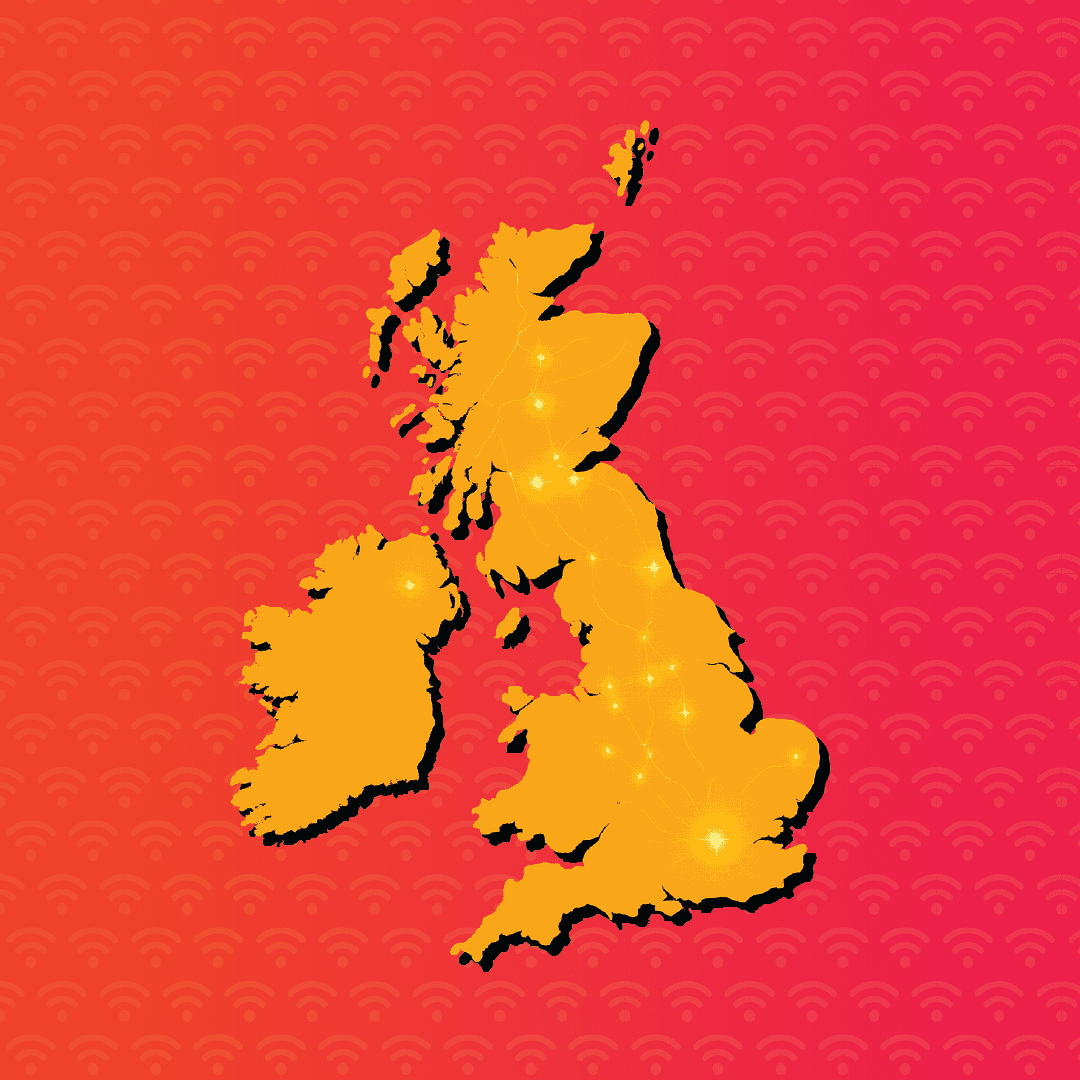Full Fibre Broadband Explained
Your complete guide to how full fibre works, its benefits, and the future of broadband across the UK.
Full fibre broadband, also known as FTTP (Fibre to the Premises), is the next generation of internet technology. Unlike older broadband types that still rely on copper cables for part of the connection, full fibre uses fibre optic cables all the way from the exchange to your home.
This technology provides the fastest and most reliable broadband available in the UK, giving you consistent performance whether you are streaming, gaming, or working from home. It is also future-proof, supporting the UK’s transition away from copper networks ahead of the upcoming PSTN Switch Off in early 2027.
Full fibre broadband is transforming how people connect across the UK, offering the speed and stability that modern homes and businesses need. Read on to learn how it works, where it is available and why it is becoming the standard for next-generation connectivity.
Ready to see if you can get connected? Enter your postcode into our quick Full Fibre Availability Checker to find out if Fusion Fibre Group full fibre broadband is live in your area.


The UK is undergoing a major digital upgrade as part of a nationwide push to replace ageing copper infrastructure with full fibre broadband. According to Ofcom’s Spring 2025 Connected Nations update, around 74% of UK homes can now access a full fibre connection.
This nationwide investment is crucial as the UK prepares for the PSTN Switch-Off, which will see the traditional copper phone network retired by the end of 2027. Once complete, all broadband and phone services will run over modern digital networks.
At Fusion Fibre Group, we are proud to play our part in this transformation. We deliver services through our own full fibre infrastructure and work with trusted wholesale partners including CityFibre, F&W Networks, MS3 Networks, Freedom Fibre and PXC. Together, we are helping to build the UK’s next-generation broadband network, connecting more homes, communities and businesses to fast, reliable and future-proof internet.
Full fibre broadband works by delivering data using fibre optic cables that transmit information as beams of light. These light pulses travel through strands of ultra-thin glass, carrying data at incredible speeds directly from the network exchange to your home.
Full fibre connections (also known as FTTP) are made entirely of fibre optic cable, so there are no copper wires involved like with part fibre (FTTC) and standard ADSL. This eliminates the bottlenecks and signal loss that often occur with older connections, allowing you to enjoy consistently high speeds and lower latency.
When you order full fibre broadband, an engineer connects your property to the nearest fibre access point, usually located underground or on a nearby pole. Inside your home, they will install a small device called an Optical Network Terminal (ONT). This connects directly to your broadband router, allowing you to access the full performance of your fibre connection.
If you are new to full fibre, our in-depth guide What Is Full Fibre Broadband and How Does It Work explains how it all comes together and why it is faster than other types of broadband.


Switching to full fibre broadband gives you a faster, more dependable connection built for modern life. Here’s what makes it different:
If you have used broadband before, you have probably come across terms like ADSL or FTTC. These older technologies still rely on copper wiring for part of the connection, which limits speed and reliability.
Full fibre broadband (FTTP) is different. It replaces that final copper link with a fibre optic connection that runs directly to your home, giving you faster, more stable internet.
If you would like to understand how full fibre differs from older broadband types such as ADSL or part-fibre (FTTC), our detailed comparison ADSL vs FTTC vs FTTP Broadband explains how each technology works and what sets them apart.

See if you can get connected to Fusion Fibre Group’s ultrafast network today. Enter your postcode to find out what full fibre broadband plans are available near you, with simple setup, hassle-free switching and reliable speeds you can count on.
Each of our full fibre broadband plans guarantee you equally fast upload and download speeds.

We will contact your current provider and take care of everything.

When your old contract ends, your new service with us begins, meaning no overlapping bills or loss of service.


To bring superfast, ultra-reliable full fibre broadband to every UK household, we have partnered with the best network providers across the UK. Working with our trusted wholesale
partners, we are expanding our reach every day, and you can count on us to bring ultrafast full fibre broadband to even the hardest-to-reach locations.









